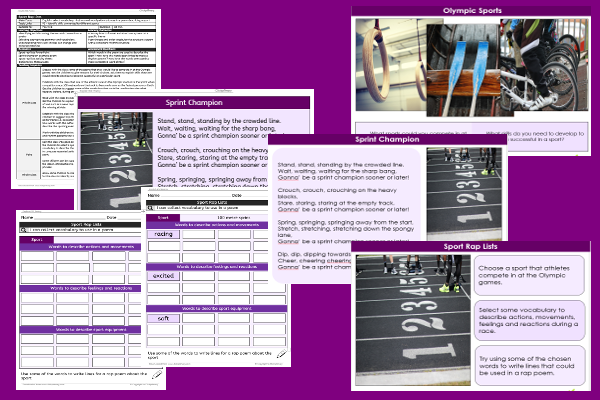Home > Key Stage Two > English > Extra > Sports Rap
Lesson Four – Sport Rap Lists

This English teaching pack for Key Stage Two gets the children to explore how to select and list vocabulary, rhythms and word patterns that can be used in a poem describing a sport that athletes can compete in at the Olympic Games.
The class can explain and model how to use the collected poetry elements to structure a poem to illustrate specific actions and events connected to a sport or game.
Download this teaching pack including a lesson plan, classroom activities and an interactive presentation to explore how to select and list vocabulary, rhythms and word patterns that can be used in a poem describing a sport that athletes can compete in at the Olympic Games
Activities in this teaching pack include a shared reading text to describe how to compose a poem using special vocabulary and rhythm structures and differentiated worksheets to select and list vocabulary, rhythms and word patterns to use in a poem describing a specific sport.
The interactive presentation gets the children to explore and list vocabulary, rhythms and word patterns that can be used in a poem describing an Olympic sport.
This lesson is part of an English scheme of work to get the children to select vocabulary and rhythm structures to compose and perform rap poems describing actions and events connected to different Olympic sports. There are teaching activities for shared learning, differentiated worksheets to support independent learning and interactive presentations to introduce concepts and key skills.
-

Theme Park Visit
Practise identifying and calculating the timing and duration of rides and events when visiting a theme park on a special family trip
-

Family Holiday Trips
Identify and record how to compose and publish recounts using adverbials of time and place to describe family holidays to different places in the world
-

Money Multiplication
Explain and model how to use standard written calculation methods to multiply money amounts in pounds and pence when solving number problems
-

Sport Teams
Explain and model how to use brackets and dashes to add extra information to sentences describing how to play sports and games as part of a team
